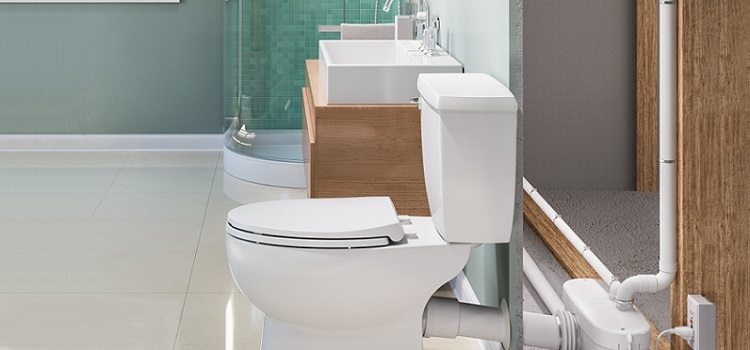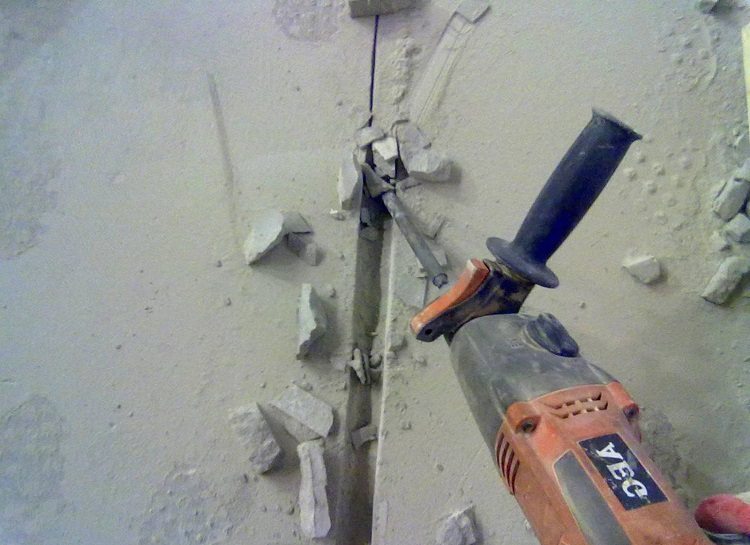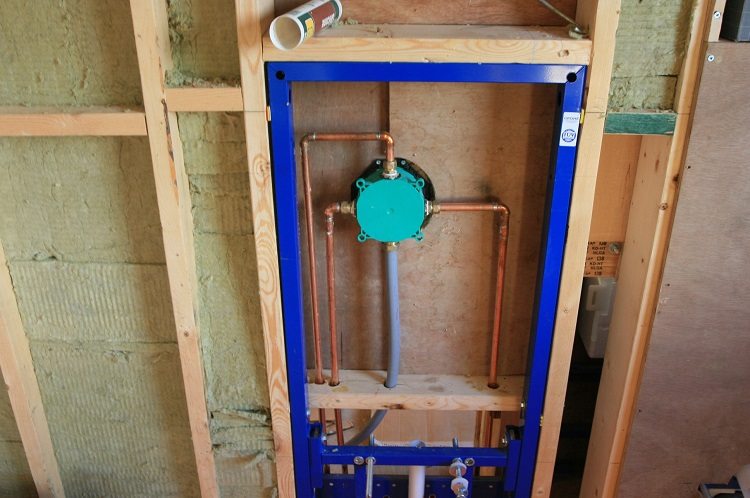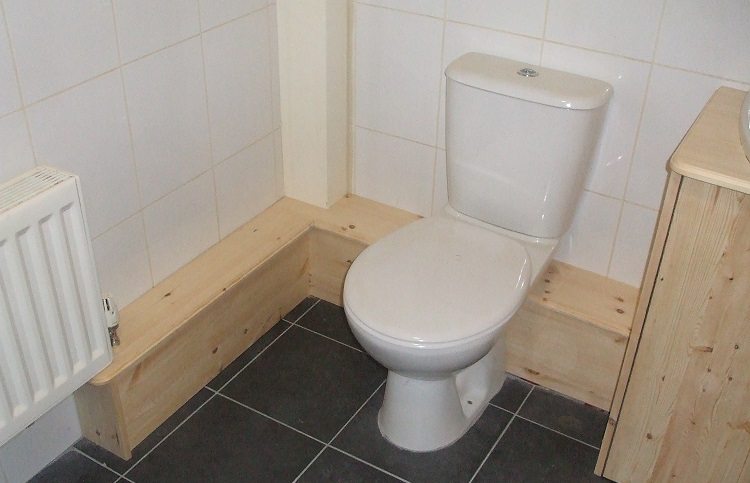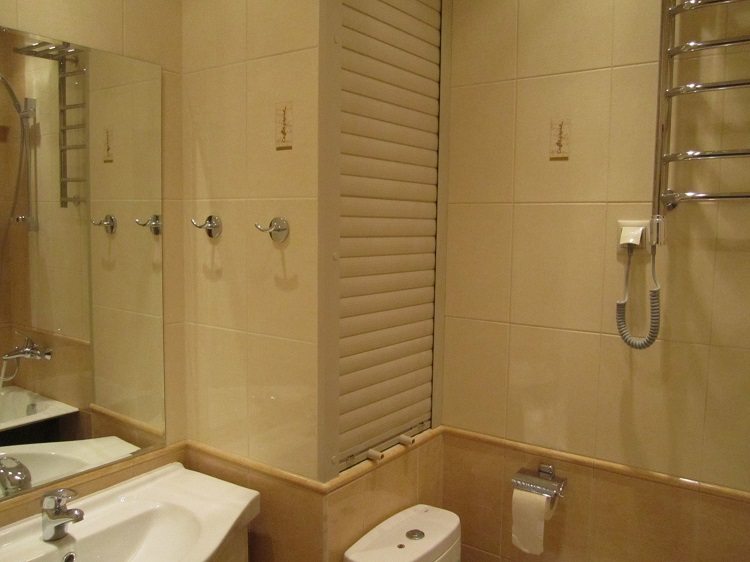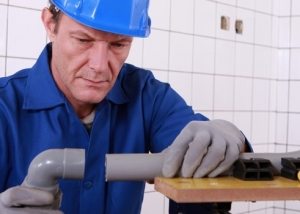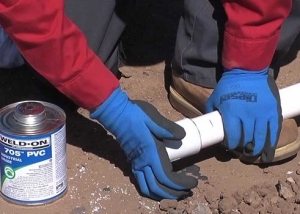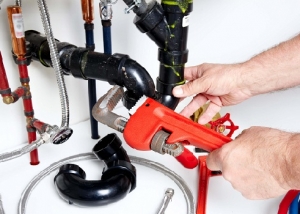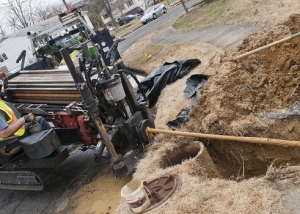The issue of aesthetics in the arrangement of any pipeline is no less important than the functionality and reliability of the system. This problem is especially acute in areas of an apartment or house where the main water supply is concentrated: in the toilet and bathroom. There are many ways to close a sewer pipe in a bathroom or toilet. And each of them has its own advantages and disadvantages.
Content
- 1 How to hide pipes in the toilet and bathroom: the main ways
- 2 How to hide sewer pipes in the bathroom and toilet?
- 3 How to close sewer pipes in a toilet or bathroom with decorative panels
- 4 How to hide sewer pipes in the toilet: plasterboard or plastic boxes
- 5 How can I hide sewer pipes in the bathroom using roller blinds
How to hide pipes in the toilet and bathroom: the main ways
If the water supply system is being laid for the first time or major repairs are being carried out in the house, then the option of laying pipes into the wall (shredding) is possible. Pipe location calculations are made when creating a water supply plan. Sewer risers with a large diameter to hide in the wall in this way is not recommended. After all, if the wall is “trimmed” to such a depth, this can adversely affect the integrity of the supporting structures of the house. Pipes with a diameter of up to 50 mm can be hidden in the gates.
You can hide the water distribution also by the installation method in the floor. Pipes in this case are laid on floor slabs and poured with cement screed. Naturally, the pipe material must be designed to be located under the screed, that is, withstand a certain pressure. It is especially worth paying attention to this when choosing plastic pipes for water supply.
But if the installation of the pipeline has already been completed by the open method, then the only option, how to hide the pipes, will be the creation of decorative structures in the toilet or bathroom.
All methods of mounting structures in order to mask the sewer pipe in the toilet and bathroom have very similar principles. Their main difference will be the choice of easy-to-use material that will provide the bathroom or toilet with an aesthetic appearance.
In addition to external characteristics, there are several basic rules for choosing finishing materials:
- The selected materials should be easy to maintain: easy to wash, not exposed to aggressive cleaning agents. It also excludes the use of materials prone to corrosion.
- From light and thin materials, very compact designs are obtained, which is important for bathrooms with a small area.
- The material must not deteriorate from exposure to moisture, temperature extremes and atmospheric pressure. When heating or cooling, they should not emit any substances harmful to health.
There are a lot of materials suitable for these requirements. In order to hide the pipes in the bathroom and toilet, moisture-resistant grades of drywall or plywood, MDF, decorative plastic panels are used.
How to hide sewer pipes in the bathroom and toilet?
The main rule that should be followed when choosing a method for masking a pipeline is to maintain access to communications. The camouflage design must be such that it can be easily opened and closed in the event of a breakdown in the water supply system. If sufficient attention has not been paid to this detail, in the event of a force majeure situation, the decorative wall will have to be broken entirely.
Good to know! In some apartments, when designing bathrooms, special niches in the wall for laying pipes were planned initially. In this case, the recess with the pipeline is simply laid with plasterboard or plastic. This is an ideal option to hide the pipe - in this case, the area of the bathroom does not decrease.
If there are water meters or valves in the communications, then to access them you need to use the installation method of the inspection hatch. If necessary, it is possible to mount the inspection hatch even after laying the decorative wall. To do this, just cut a hole in it of the desired size, and then close it with a plastic hatch with a door.
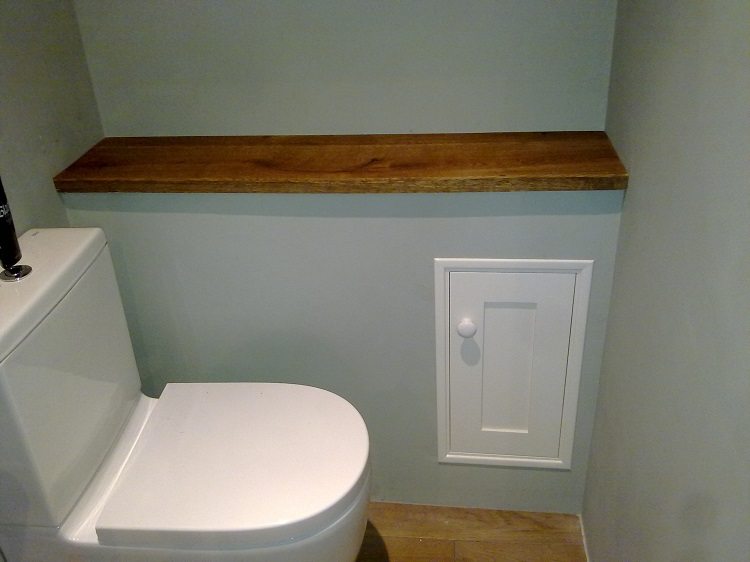
Closing pipes with a false wall, it is necessary to arrange a door in it for access to communications
Before starting the installation of the structure hiding the pipeline, it is necessary to make sure that there are no defects in the pipe joints. There should be no leaks or deformations in the system. The connecting elements must be well sealed, and the sewer pipes must have the necessary angle of inclination.
How to close sewer pipes in a toilet or bathroom with decorative panels
Plastic or drywall panels (false walls) - this is one of the most optimal options for how to plug (hide) a sewer pipe in a toilet with a small area. It is also possible to close communications and bathrooms. False wall can be finished by any method, for example, often facing ceramic tiles. Also on sale are plastic panels of various textures and colors that do not require additional decoration.
For the decoration of the walls in the bathroom and toilet, PVC plastic panels are used. Their dimensions may be as follows:
- thickness: from 5 to 10 mm. The more false the wall, the stronger the panel should be;
- length: from 260 to 600 cm;
- width: from 10 to 50 cm.
If the false wall is made of drywall, it is worth purchasing a primer and putty for grouting. For maximum protection of the drywall wall from moisture, the interior of the structure can be treated with linseed oil. Plastic panels are moisture resistant and are equipped with special locks on the edges of the products, so they can close communications without additional funds.
If you do not plan to install a revision hatch, it is better to finish the bathroom with plastic panels. The use of drywall is not recommended in cases where it is necessary to hide old pipes. In the event of an accident, the plastic wall is dismantled easily and quickly, unlike a plasterboard partition covered with tiles.
Installation of false walls is carried out right next to the ceiling and floor. The minimum distance from the main wall to the decorative one is from 70 to 100 mm. To install the panel, the mounting bases are made of aluminum profile, preferably galvanized. The distance between the guide profiles is calculated depending on the wall area - from 30 to 60 cm. The metal frame is sheathed with finishing material using self-tapping screws.
To hide the turns, edges and corners of the structure, corner profiles, starting strips and skirting boards are used. It is better to seal the joints of panels with profiles with silicone sealant after installation.
How to hide sewer pipes in the toilet: plasterboard or plastic boxes
A box is one of the varieties of false walls.Installation will be similar, with the only difference being that they can only hide pipes, they will not occupy the entire wall.
A box or a podium (if you want to hide horizontal pipes) can be a great place to store tools or household chemicals.
Helpful advice! When installing the boxes, you should select the material so that it does not have to be joined vertically (for example, panels with a complex pattern). In this case, additional support bars may be required to maintain rigidity.
A functional option in order to hide the pipeline in the bathroom and toilet is a box cabinet. Its installation is somewhat more complicated than the installation of simple boxes, but this design is practical. To simplify the work, you can buy ready-made doors for cabinets.
The frame for this type of boxes will have to be made wooden. Bars before work must be treated with an antiseptic that protects the tree from fungus and rot. The walls of the cabinet can be made of drywall, plywood or laminated material. The lower part of the box is better not to put directly on the floor in the toilet or bathroom, so as not to spoil it in case of water spill. The base for the box can be legs at least 5-7 cm high.
In today's market you can find ready-made boxes to hide pipes. If they are suitable for the bathroom in size and style, then you can hide the pipes and such a factory construction. This significantly reduces the time spent on finishing the room.
How can I hide sewer pipes in the bathroom using roller blinds
Roller shutters (roller shutters, blinds) are a good option for masking pipes. This method is noteworthy in that the shutters allow continuous access to the pipes. But the installation of these elements has some features and difficulties.
Roller shutters are installed on an existing basis, that is, installation of false walls or boxes cannot be avoided. It is necessary to cut a window in the decorative panel, as is the case with the installation of the inspection hatch. And only after that roller shutters are mounted in the hole. It is noteworthy that not all of these designs available on the market are suitable for this purpose. It’s worth buying only special modifications for plumbing. They differ from ordinary roller shutters in that they are made of stainless metal or plastic.
For a bathroom or toilet, you can also choose blinds with electric motors hidden in moisture-proof boxes. But in the event that the opening width is less than 52 cm, you will have to use blinds that can be opened and closed only manually.
